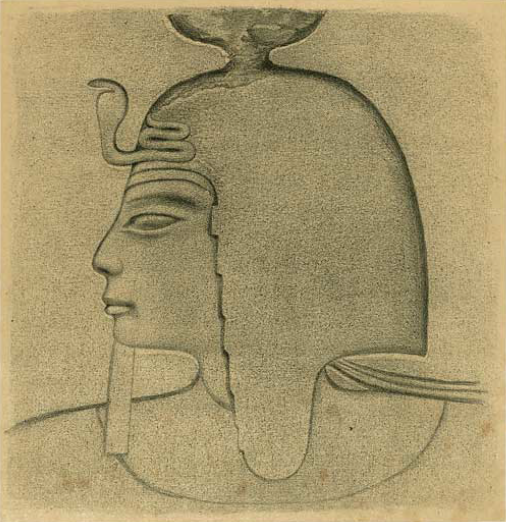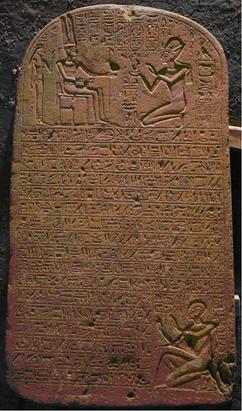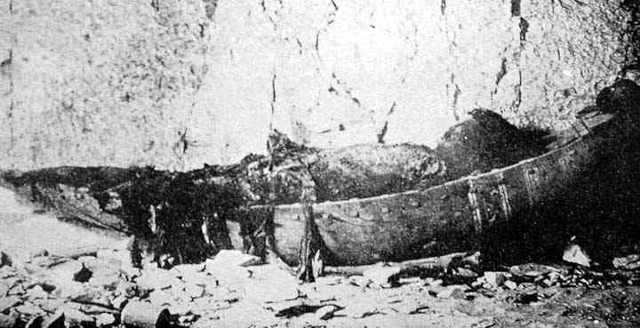
| SETHNAKHT
Drawing of a relief of pharaoh Sethnakht Userkhaure-setepenre Setnakhte (also called Setnakht or Sethnakht) was the first pharaoh (1189 BC–1186 BC) of the Twentieth Dynasty of the New Kingdom of Egypt and the father of Ramesses III.
Accession
:
A connection between Setnakhte's successors and the preceding Nineteenth Dynasty is suggested by the fact that one of Ramesses II's children also bore this name [citation needed] and that similar names are shared by Setnakhte's descendants such as Ramesses, Amun-her-khepshef, Seth-her-khepshef and Monthu-her-khepshef.
Reign
length :
Year 4 quartzite stela of Bakenkhunsu In a mid-January 2007 issue of the Egyptian weekly Al-Ahram, however, Egyptian antiquity officials announced that a recently discovered and well-preserved quartzite stela belonging to the High Priest of Amun Bakenkhunsu was explicitly dated to Year 4 of Setnakhte's reign. The Al-Ahram article notes that this data:
contradicts...the official record, which says Setnakhte ruled Egypt for only three years. According to the new information provided by the stela, Setnakhte's reign certainly lasted for four years, and may have continued for [a little] longer.
Zahi Hawass, the former Secretary General of Egypt's Supreme Council of Antiquities, declared the discovery to be one of the most important finds of 2006 because "it adjusts the history of the 20th Dynasty and reveals more about the life of Bakenkhunsu." As Setnakhte's reign was short, he may have come to the throne fairly late in life.
However, the Al-Ahram figure does not change the fact that Setnakhte likely truly ruled Egypt for only three, rather than four, full years since there are no Year 1 dates attested for him, and his famous Year 2 Elephantine stela states that Setnakhte finally secured his kingship after defeating all his opponents and challengers to the throne in his second year. The date of the Elephantine stela in Year 2 II Shemu day 10 of Setnakhte's reign—the date of which is mentioned only halfway in the stela rather than at its start—is immediately followed by this proclamation: "There were no opponents against His Majesty, l.p.h., in all the lands."
This reference to the defeat of Setnakhte's enemies implies that this specific date marked the termination of a conflict—presumably Setnakhte's struggle for the throne—which extended partly into his second year and means that Setnakhte's first year would have overlapped with Twosret's final year, if Twosret was his opponent. Therefore, he likely did not even rule Egypt in his theoretical first year and could only properly administer the country from sometime during his second year. In any event, there was an interregnum lasting at least a year in which no ruler controlled all of Egypt and Setnakhte's effective reign length should be reduced by a year from 4 to 3 years.
Setnakhte's Elephantine stela touches on this chaotic period and refers explicitly to the expulsion of certain Asiatics, who fled Egypt, abandoning the gold which they had looted from Egyptian temples. It is uncertain the degree to which this inscription referred to contemporary events or rather repeated anti-Asiatic sentiment from the reign of Pharaoh Ahmose I. Setnakhte identified with the God Atum or Temu, and built a temple to this God at Per-Atum (Biblical Pithom). [citation needed]
The "mummy in the boat" from KV35, before its destruction After his death, Setnakhte was buried in KV14 which was originally designed to be Twosret's royal tomb. His mummy has never been identified with certainty, although the so–called "mummy in the boat" found in KV35 was sometimes identified with him, an attribution rejected by Aidan Dodson who rather believes the body belonged to a royal family member of Amenhotep II of the 18th Dynasty. In any case the mummy was destroyed in a looting in 1901, thus preventing any analysis on it.
Monuments :
Reliefs of Horus and Geb from tomb KV14 While Setnakhte's reign was still comparatively brief, it was just long enough for him to stabilize the political situation in Egypt and establish his son, Rameses III, as his successor to the throne of Egypt. The Bakenkhunsu stela reveals that it was Setnakhte who began the construction of a Temple of Amun-Re in Karnak which was eventually completed by his son, Ramesses III. Setnakhte also started work on a tomb, KV11, in the Valley of the Kings, but stopped it when the tombcarvers accidentally broke into the tomb of the Nineteenth Dynasty Pharaoh Amenmesse. Setnakhte then appropriated the tomb of Queen Twosret (KV14), his predecessor, for his own use.
Papyrus
Harris :
The
land of Egypt was overthrown from without, and every man was thrown
out of his right; they had no "chief mouth" for many years
formerly until other times. The land of Egypt was in the hands of
chiefs and of rulers of towns; one slew his neighbour, great and
small. Other times having come after it, with empty years, Irsu
('a self-made man'), a certain Syrian (Kharu) was with them as chief
(wr). He set plundering their (i.e., the people's) possessions.
They made gods like men, and no offerings were presented in the
temples.
Genetics
:
Source :
https://en.wikipedia.org/wiki/Setnakhte |



.jpg)